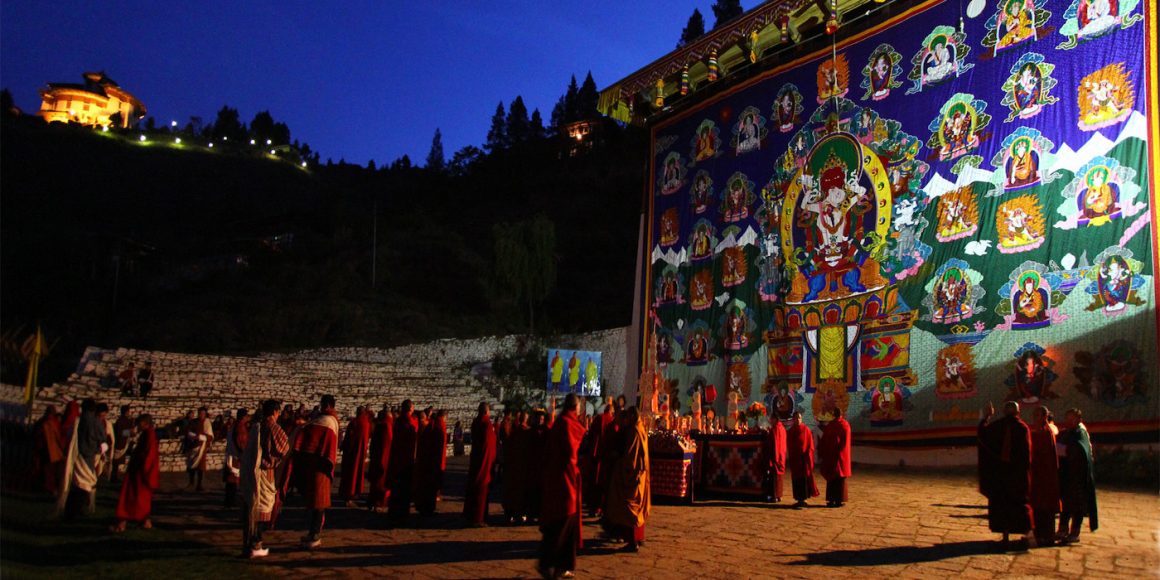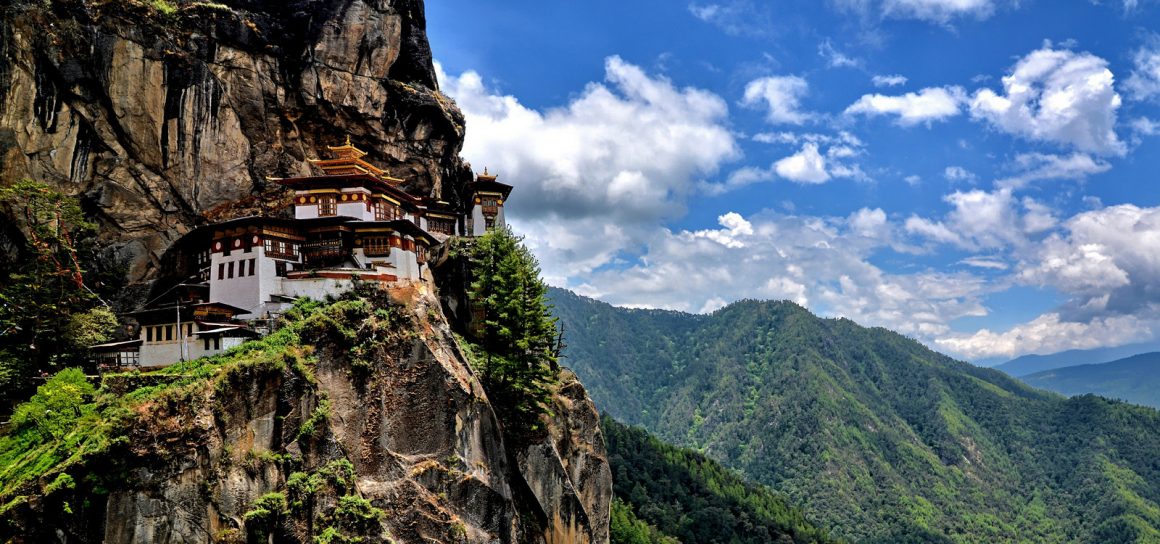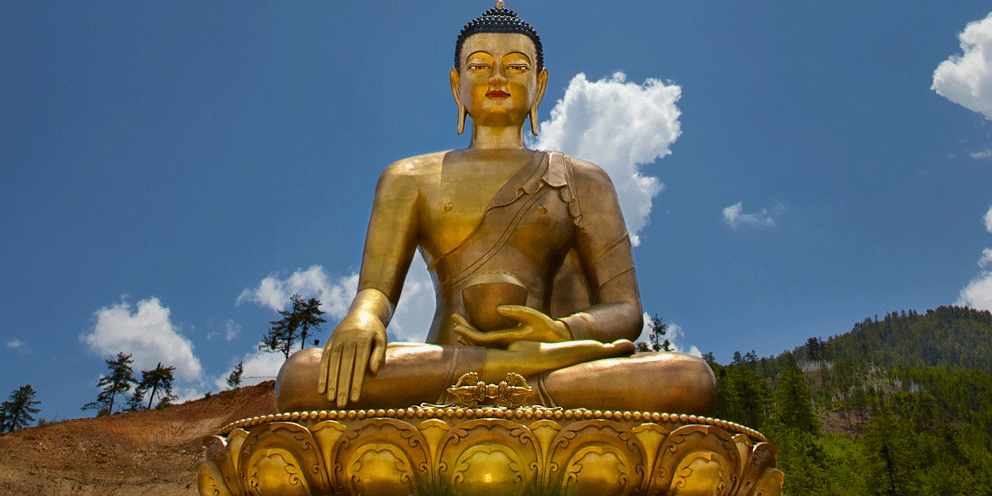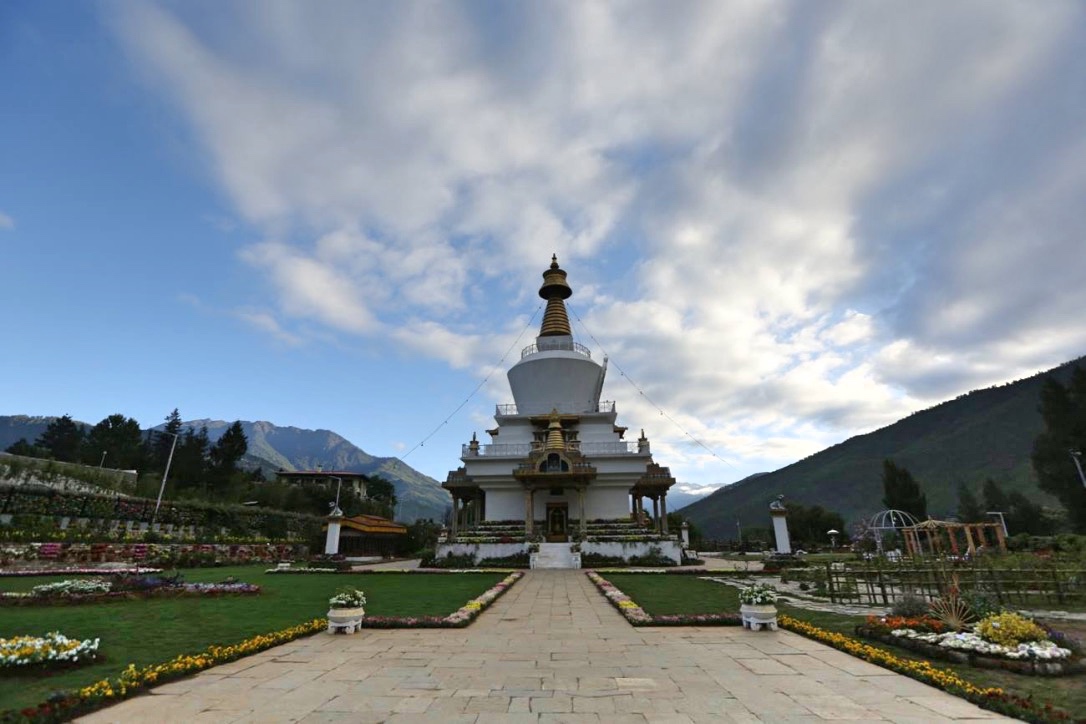Brief General Background on Paro Tshechu ( festival)
Paro Tshechu (festival) is one of the biggest religious celebrations of the Bhutanese year. It has been held annually since the 17th century when Zhabdrung Ngawang Namgyel, the founder of the state of Bhutan, and the Ponpo Rigzin Nyingpo initiated the festival together with the consecration of Paro Dzong (fortress) in 1644. The 5 day festival is observed in three parts-prefestival rituals a day before the festival, ceremonies are undertaken on the first day inside the Paro Dzong, and the main festivities on the festival ground on the remaining 4 days.
The Tshechu is a festival in honour of Padmasambhava-“one who was born from a lotus flower “, popularly known under the name of ” Guru Rimpoche ” the Precious Teacher. This Indian saint contributed enormously to the diffusion of Tantric Buddhism in the Himalayan region of Tibet, Nepal, and Bhutan, etc around 800 A.D. The biography of Guru Rimpoche is highlighted by 12 episodes on the model of the Buddha Shakyamuni’s life. Each episode is commemorated around the year on the 10th day of the month by “the Tshechu “which has become the name of a very popular festival. The dates and the duration of the festival vary from one district to another but they always take a place on or around the 10th day of the month according to the Bhutanese calendar.
Main Highlights of Paro Festival
- Paro Tshechu (festival) is one of the most popular festivals in the country.
- It offers the best opportunity to witness the Bhutanese’s rich culture, history and religion that distinguish the people and country distinctly from rest of the countries.
- Bring you a closer contact with the people and give you an insight into the Bhutanese lives, beliefs and more.
- During Tshechu the dances are performed by monks as well as by laymen.
- The Tshechu is a religious festival and by attending it, it is believed one gains merits.
- It is also a yearly social gathering where the people come together to rejoice dressed in all their finery.
Day 1: Arrive Paro
Your flight to Paro in Bhutan. After checking into your hotel you have time to relax and have lunch before beginning your discovery of Bhutan. Your first visit is to Paro Dzong. Located above the river the temple is a fine example of Bhutanese architecture. Driving up through the Paro Valley you come to the ruins of Drukgyel Dzong. It was from here that the Bhutanese repelled Tibetan armies in the 17th C. Before returning to Paro you visit Kichu Temple, one of the 108 temples built in the 7th C by the Tibetan King Songsten Gampo.
Overnight in Paro
Day 2: Paro Tshechu (3rd Day of the Tshechu)
Today you experience the colour, excitement and spectacle of the Paro Tshechu Festival. It is the most divine and deeply symbolic of all the Buddhist festivals celebrated in Bhutan. Dressed in traditional finery, devotees flock to the Paro Dzong to proclaim their faith and receive blessings. Monks and lay people, dressed in elaborate silk brocade costumes perform festive dances of good triumphing over evil to the haunting sounds of trumpets, cymbals and flutes. The dances and costumes have survived unchanged for thousands of years, each dance is an exact re-enactment of visions seen by Bhutan’s great Buddhist saints and any changes would be seen as sacrilege. Many dances will be performed today including: Lords of the Cremation Grounds. Terrifying Deities, Heroes, Novel Man and Ladies Lencham , Stag and Hounds. The dances are interspersed with folk songs and clowning aided by copious amounts of butter tea and a locally produced potent alcoholic barley spirit.
Overnight in Paro.
Day 3: A day hike to Taktsang Goempa (Tiger’s Nest Monastery) in Paro
After breakfast,you will hike up to Taktsang Monastery, also known as ‘Tiger’s Nest’. The climb up to the viewpoint will take around 1 ½ hours and from there you will enjoy a spectacular view of the monastery clinging to the side of the cliff. Stop for refreshment at the View Point Cafeteria.Then walk further up to the monastery which will take about 1 hour. It is said that in the 8th century Guru Rinpoche flew on the back of a tigress from eastern Bhutan to this place and meditated in a cave here for 3 months. The principal Lhakhang (monastery) of the present monastic complex dates from 1692. Taktsang was damaged severely by fire in 1998 but has now been fully restored to its former beauty.After visiting the monastery, walk back down to the road on the way stop for lunch at the view point cafeteria and then walk further down to the road point. Then drive back to hotel and relax.
Overnight in Paro.
Day 4: Paro Tshechu and Paro-Thimphu ( 54 km, 1 hr)
Following an early breakfast, you make your way to the early morning blessing from Thangka of Guru Rhinpoche. Today is the most auspicious day of the festivities and dances of the Heroes, Ging and Tsholing, the Eight Manifestatons, the Sixteen Fairies and the Religious Song are all performed in a magnificent cacophony of sound and color. During the day you visit the National Museum, housed in the Ta Dzong (watchtower). Here is an intriguing collection of artefacts which provide you with a wonderful insight to the rich culture and heritage of the Kingdom of Bhutan. In the evening you will travel to Thimphu, the next destination on your tour in Bhutan.
Overnight in Thimphu
Day 5:Thimphu Tour
Thimphu, lying in the lap of Northern Himalaya has been inhabited since the 13th C but it did not really begin to be fully established until 1961 when it was pronounced the capital of Bhutan. It was only in 1962 that the first vehicles entered the city and now, although a bright modern city, it has the accolade of being the only capital city in the world without traffic lights! Today you visit; the Centenary Farmer’s Market, a wonderful opportunity to interact with local people; Zilukha Nunnery, which still houses over 70 nuns, the Memorial Chorten, built in memory of King Jigme Dorji Wngchuck and Tashichoe Dzong, constructed in 1641 and housing a magnificent throne room. From here you drive to Keuselphodrang to see the Bhutan’s largest Buddha statue perched on a hill overlooking the city.
Overnight in Thimphu
Day 6: Thimphu-Punakha/Wangdue (71 km, 2 1/2 hr)
After breakfast you leave the capital and travel through the southern Thimphu Valley and ascend Dochula Pass to 3088 metres. On a clear day you can delight in spectacular views across the Himalayan Mountain ranges. Along the way you stop off at the beautiful 108 chortens (Buddhist monuments) built on a hill by Her Majesty Ashi Dorji Wangmo. Refreshment is served at Dochula Resort a beautiful example of Bhutanese architecture with amazing views across the mountains. Then you will travel onto Punakha, the old capital of Bhutan. Lunch will be served at Punakha. Afternoon you visit the Punakha Dzong, located on the island of the Pho-Chu (male river) and the Mochu (female river). Built in 1637 the Punakha Dzong served as a religious and administrative centre for the region. Currently the Dzong is the winter residence of the Holy Monk Body of Bhutan. To complete the day you visit Dho Jha Lam Temple, the winter residence of the Holy Monk Body of Bhutan.
Overnight in Punakah/Wangdue.
Day 7: Punakha & Wangdue Tour
After breakfast, drive through the upper Punakha Valley you pass through traditional villages and farmlands before taking a pleasant short trek to Khamsum Yuelley Namgyal Chorten, built by the Queen of Bhutan for peace and stability in a changing world. In the afternoon you continue on to Wangdue, visiting the Devine Madman’s Monastery – Chhimi Lhakang, famously known for its fertility shrine. The monastery is dedicated to Lama Drukpa Kuenley who used humour and outrageous behaviour to dramatise his teachings. The final visit of the day is to the ruins of Wangdue Dzong (destroyed by fire in 2012), situated on a ridge overlooking a river junction, it played an important role in unifying the western and southern regions of the country. You will also visit local markets in Punakha/Wangdue.
Overnight in Punakha/Wangdue.
Day 8: Punakha/Wangdue-Thimphu ( 71 km, 2 1/2 hrs)
After breakfast travel to Thimphu through Dochula pass stopping at Simtokha Dzong en-route. Built in 1627, it is often said to be the oldest dzong in Bhutan. The site is said to have been chosen to guard over a demon that had vanished into a rock. The dzong was constructed to enclose the rock, to ensure that the demon would remain imprisoned. Simtokah Dzong now houses the Institute for Language and Culture. Your next destination is the Takin Preserve which houses the national animal, the unique Takin, which lives in herds at altitudes of over 4000 metres and weighs as much as 220 kilos! Your last visit for the day is the Government-run Handicraft Emporium and Craft Bazaar where you can find fine examples of locally produced woven textiles, thangkha paintings, ceramics, jewellery, slate and wood carvings.
Overnight in Thimphu
Day 9: Thimphu Tour & Thimphu-Paro
Today, after breakfast, you continue to explore Thimphu and the surrounding area starting with The National Textile Museum, an excellent place to see traditional arts and crafts being perpetuated. You also visit the National Institute of Traditional Medicine, where medicinal herbs are compounded and dispensed and where traditional practitioners are trained. Visits are planned to the outdoor National Folk Heritage Museum, displaying rural life in Bhutan, the Chengzamtok Weaving Centre to observe beautiful colourful silk and cotton textiles being woven into shawls, scarves and traditional Bhutanese dresses and a Bhutanese paper factory to see the hand made traditional craft of paper-making. Good quality traditional paper is held in very high esteem in Bhutan.
In the late afternoon drive to Paro and overnight in Paro
Day 10: Paro Departure
After breakfast, you will drive to the Paro Airport for your flight to your onward destinations.
End of Tour Program
- A sustainable tourism Royalty of US $65 per person per night. This Royalty goes towards free education, free healthcare, poverty alleviation, along with the building of infrastructure
- All internal taxes and charges
- A minimum of 3-star accommodation (4 & 5 star requires an additional premium).
- All Meals
- All travel with a licensed Bhutanese Tour Guide
- All Internal Transportation
- Camping Equipment and Haulage for Trekking Tours
- Porter and Pony Charges
The rates given above are applicable per tourist per night halt in Bhutan. On the day of departure, it shall be limited to breakfast only and any extra requirements shall be payable on actual basis.
- Airfare and Airport Tax
- Bhutan Visa Fee (US $40 per person)
- Alcoholic beverages and drinks.
- Luxury hotels
- Insurance and Travel and others
- Trips/Gratitude to the guide and driver
The rates given above are applicable per tourist per night halt in Bhutan. On the day of departure, the ‘local agents’ host obligation shall be limited to breakfast only and any extra requirements shall be payable on actual basis.
However, the Luxury hotel surcharges are extra over the normal tariff and range from US $500-US $1800 depending on which you choose. International standard luxury hotels available are Aman resort, Uma, Taj Tashi and Zhiwaling.




